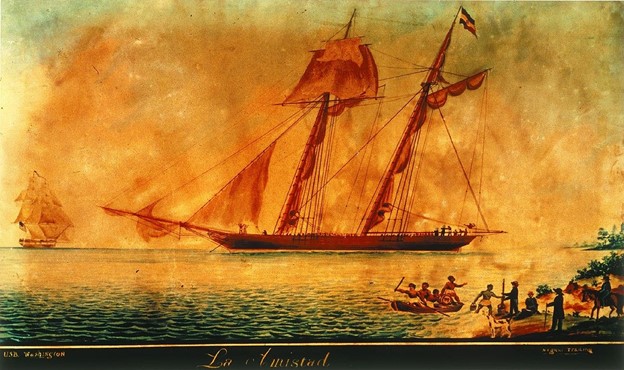
On that day, August 25, they wandered from one isolated dwelling to another, frightening most residents but managing to purchase two dogs, a bottle of gin, and some sweet potatoes with the Spanish gold doubloons they had found aboard the ‘Amistad.’ — Mutiny on the Amistad
In August of 1839, nine Africans came ashore at Culloden Point in Montauk seeking water and food and a way to make their way home to Sierra Leone.
There, back in Africa, they had been kidnapped and bound in iron by slave traders who took them on a terrifying trip to Cuba to be sold. Now aboard the “Amistad,” the 53 mostly young male Africans were in the process of being transported to Haiti when they mutinied under the leadership of a proud young man named Cinque. The mutineers killed the ship’s captain and cook but spared the two Spaniards who had purchased them, in the hope that the Spaniards could steer them back to Africa.
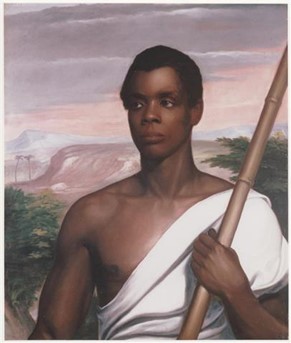
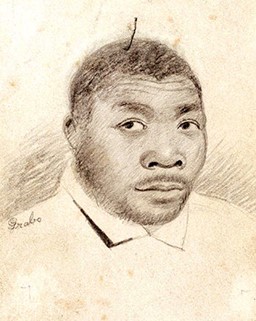
The Spaniards tricked the Africans, however, navigating the “Amistad” toward Africa by day but toward America by night. After two months of tacking back and forth, the schooner stopped for water and provisions off Culloden Point, where it was seized by an American naval vessel and the Africans were taken prisoner. The “Amistad” was towed to New Haven, Connecticut, where the Africans were tried for mutiny, murder, and piracy while several parties sought possession of the ship’s cargo as well as the Africans.
With a debate about abolition raging in the background, the trial became a cause célèbre of national, even international, significance. Slave trading in the Spanish colonies was prohibited by international treaty. Court arguments came down to whether the captives had been previously enslaved in Cuba and thus considered legitimate private property, as the slave traders falsely claimed, or free men from Africa who had been entitled to throw off their abductors by any means possible, as was true.
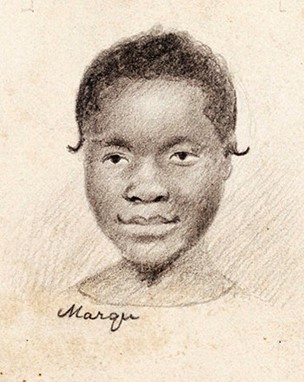
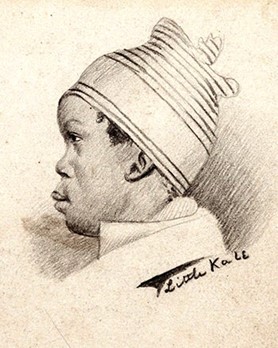
The captives did not speak English. According to an article in Yale News, a language professor learned their words for the numbers 1 through 10 and walked along streets and wharfs counting aloud in Mende, hoping that someone would recognize that language. His plan was a success: a native African sailor who’d worked recently on a seized slave ship could speak the language and traveled to New Haven to interpret for the “Amistad” defendants.
Despite opposition from both President Martin Van Buren and the Spanish government, the captives prevailed. “Anticipating a different outcome, Van Buren had stationed the naval schooner ‘Grampus’ in New Haven harbor to take the Africans to Cuba,” where they most likely would have been executed, according to the account in Yale News.
The case was appealed in the Supreme Court, where a majority of the justices were enslavers yet decided in favor of the “kidnapped Africans, who, by the laws of Spain itself, are entitled to their freedom.” Finally, in 1841, 35 of the original 53 captives, as well as several missionaries, set sail for Africa. Several of the Africans returned to the United States, where six were buried in New Haven.
This week is being celebrated as Amistad Week, a week of commemoration, culture, and community, realized through a series of events hosted by the Eastville Community Historical Society, the Montauk Historical Society, and the Montauk Library.
On Saturday, August 30, the Montauk Library will co-host “Making the Connection: Amistad Film Screening and Panel Discussion.” The screening will begin at noon in the library’s community room and refreshments will be provided during a brief intermission. Folks who have already seen the film are welcome to join for the panel discussion starting at 3:30 pm. The panel discussion will be moderated by Dr. Georgette Grier-Key of the Eastville Community Historical Society. The panelists include The Plain Sight Project’s Donnamarie Barnes and David Rattray, and Paula Mann-Agnew, Executive Director of Discovery Amistad. Click here for more information and to sign up.

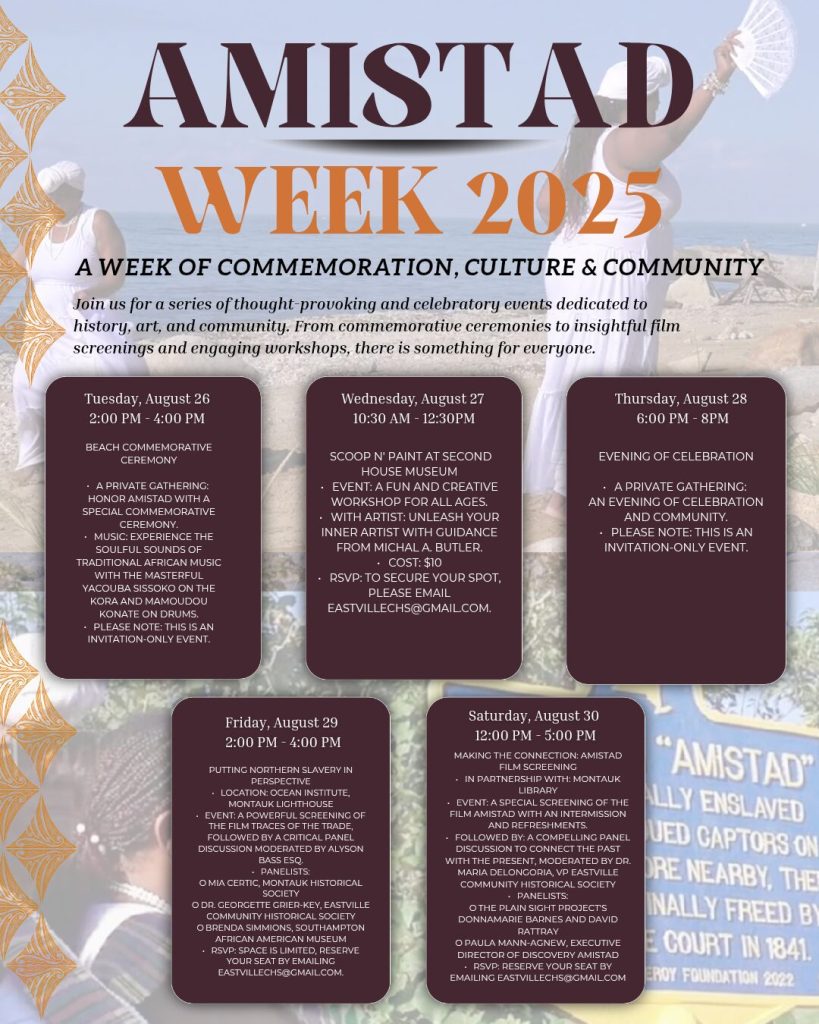
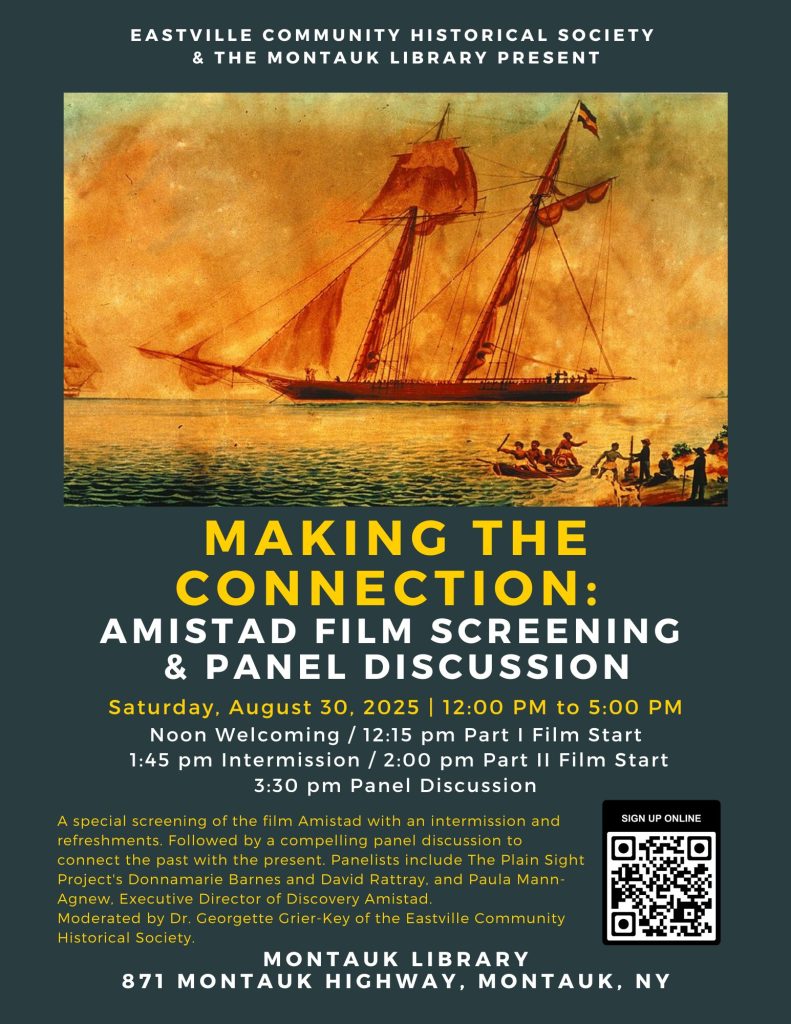
Reply or Comment